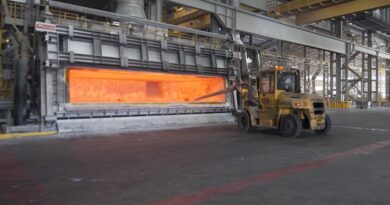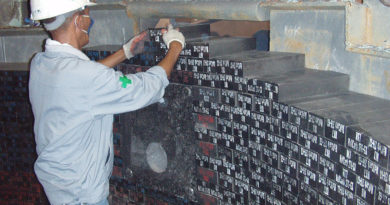Sidenor successful in refractory waste valorisation
Sidenor, a Spanish steelmaking company, consumed in 2019 around 11,000 tonnes of refractories, used in continuous casting (41%), ladles (35%), and EAF (24%).
Using the 4R Model (Reduce, Reuse, Remanufacture, Recycle) Sidenor has been highly active in systematic and integral valorisation of refractory waste for some years now, having succeeded in valorising MgO-C and alumina refractories, and now working on similar for isostatics and continuing casting tundish masses.
What is refractory waste valorisation?
Definition: The term “refractory waste valorization” refers to any industrial processing activities aimed at reusing, recycling, or composting from wastes, useful products.
Sidenor’s refractory waste sorting and reuse procedures are integrated in the latest projects Life5REFRACT and RFCS E-CO-LADLEBRICK.
Life5REFRACT aims to seek high value added refractory products incorporating a significant amount of recycled refractory, using MgO-C bricks and tundish masses and alumina based isostatics.
RFCS E-CO-LADLEBRICK’s objective is reduction of the volume of MgO-C waste by means of monitoring the ladle refractory consumption in order to optimise ladle life.
The work developed during the last eight years has allowed Sidenor to increase the refractory waste recoverable fraction, and thus, increase valorisation.
New remanufacture applications have been identified for the different kinds of refractory waste, providing alternatives with significant profit.
A highly innovative and important milestone has also been achieved: the valorisation of MgO masses from tundish.
SOURCE: imformed.com




